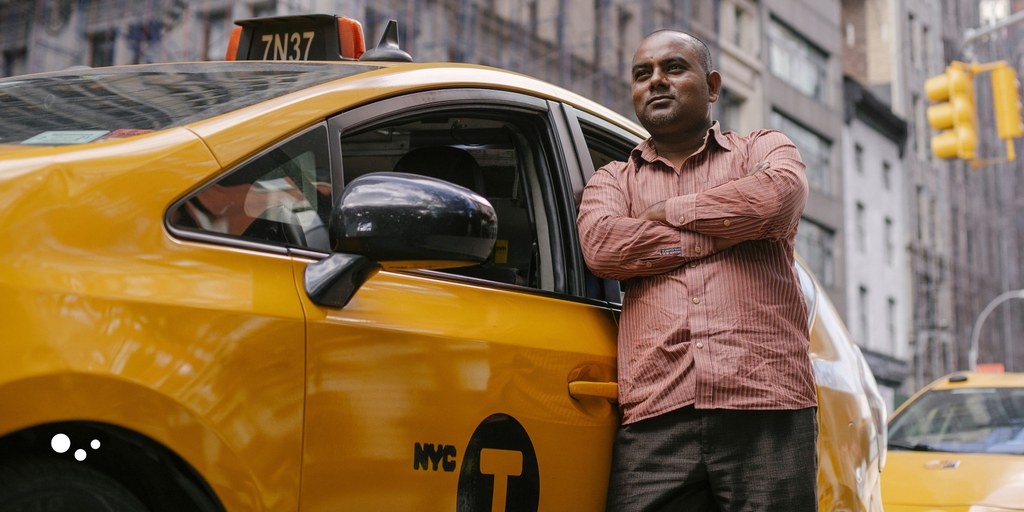Author: Honey Dhanecha
This blog has been written by one of the students who joined the WageIndicator Gig team during their Internship Program.
What changed in NYC’s ride-hailing rules?
In June 2025, New York City’s Taxi and Limousine Commission (TLC) finalised new minimum pay rules for app-based ride-hailing drivers such as Uber and Lyft drivers.The city settled on a 5% increase in minimum per-minute and per-mile pay, down from the originally proposed 6.1% hike.
Alongside this wage update, the TLC introduced new protections:
- Uber and Lyft must now give a 72-hour notice before locking drivers out of the app.
- Uber and Lyft can no longer lock out drivers for at least 16 hours after they’ve started accepting trips. Companies now face a $500 fine for each violation of this rule.
- It also scraps the confusing auto-updates to pay based on “utilisation rates”-a loophole that lets Uber and Lyft underpay drivers during slow periods.
What is the “utilisation rate” and why does it matter?
The utilisation rate measures the percentage of time a driver is actively transporting passengers. Under NYC’s old pay formula, this number was central to calculating driver compensation. New York City's old TLC pay formula sets a minimum per-trip fare based on distance and time, using fixed rates per mile and per minute.These rates are adjusted by a "utilisation rate," which reflects the share of time drivers actually spend with passengers. In 2024, that rate was 58%, assuming that out of every 100 minutes a rider spent online, 58 minutes were spent transporting passengers, while the remaining 42 minutes were either waiting for a ride or en route to a pickup.While drivers weren't explicitly paid minimum hourly wages, their minimum per-trip pay was inflated to account for this average downtime.So rather than guaranteeing a minimum hourly wage while online, the system aimed to cover unpaid time indirectly,though this model was vulnerable to exploitation through driver lockouts.
The lockouts began as a response to New York’s 2019 pay laws, which required Uber and Lyft to maintain utilisation rates above 53% to reduce their payout obligations.To fulfil this criterion, ride-hailing platforms locked drivers out during low-demand hours to make remaining drivers appear busier. Higher utilisation figures allowed companies to avoid raising driver pay despite longer hours,wait times, and economic uncertainty.This was the loophole the TLC has now attempted to close.A 2021 academic study by Tianyi Li and colleagues, published in Sage Journals, concluded that utilisation rates are lower than 50% in five major U.S cities.
With the new rule effective from August 1, 2025, rider pay is no longer automatically tied to utilisation.The TLC’s new pay formula sets a fairer wage by factoring in expenses like:
- real driver expenses (like fuel, rentals, and EV charging)
- updated time and distance-based utilisation rates (53.3% and 68.5% respectively)
- an annual inflation adjustment based on local cost-of-living.
Utilisation rates will likely remain a topic of debate,especially how waiting time is calculated and compensated, since drivers often stay online across multiple apps simultaneously.While limiting utilisation rates may reduce work opportunities for some drivers, it can ensure more sustainable earnings for those waiting. Under the new TLC rules, pay still depends on trip length and duration, but now uses more accurate data and eliminates loopholes that previously let platforms underpay drivers for downtime.
What’s the broader context in NYC?
This move comes amid a broader wave of worker protections in NYC’s gig economy.
In January 2023, Uber drivers in New York City went on strike after a Manhattan judge blocked a planned pay hike just days before it was set to take effect.The TLC rule would have increased pay by 7% per minute and 23% per mile, but Uber filed a lawsuit to halt the raise resulting in backlash and protests from drivers.
In July 2023,Uber, DoorDash, Grubhub sued New York City to block a law mandating a $17.96/hour minimum wage for delivery workers, arguing it would hurt service and raise costs.The city defended the law as a step toward lifting workers out of poverty.
In January 2024, the minimum wage for workers in New York City was raised to $16 per hour, which was earlier set at $15 per hour in 2023.
In April 2025, NYC introduced a minimum hourly wage for app-based food delivery workers to $21.44/hour.
Does the 5% raise go far enough?
For many ride-hailing drivers, especially full-time ones, a 5% increase might not significantly change their economic reality, especially in a city like New York where the cost of living keeps rising. Some of the key concerns are:
- Rising expenses: Vehicle maintenance, gas, tolls, and platform fees still eat away a huge chunk of drivers’ earnings.
- Inflation: A 5% bump may simply match inflation rates in NYC, not increasing real income for workers.
- Unpaid labour: Drivers are also spending time driving to pickups, waiting, and maintaining vehicles, which constitutes unpaid labour for drivers.
According to Bhairavi Desai, executive director at the New York Taxi Workers Alliance,while the new rules are a step forward,“The adjustment in pay is nominal”and there’s a long way to go before drivers truly earn fair wages.
How can drivers calculate what a fair rate really is?
A cost-of-living-based approach is a widely recognised method to determine fair pay. While the Living Wage is the broadly recognised approach for employed workers with fixed hours and benefits, it doesn’t apply to self-employed or gig workers.To fill the gap for self-employed and gig workers, WageIndicator introduced the Living Tariff methodology using tools like WageIndicator Living Tariff Tool. The Living Tariff Tool helps gig workers, freelancers and self-employed workers factor in living wages along with additional costs like work equipment cost, income taxes, social security costs and overhead expenses, through WageIndicator cost of living database for 160+ countries,empowering platform workers to compute and earn remuneration that supports a decent standard of living for workers and their families.
The Living Tariff is a daily income benchmark designed specifically for gig and self-employed workers.It includes hidden work-related costs like long waits, cancellations, and unpaid labour expenses, and helps gig workers account for all expenses and overhead time.The Living tariff tool developed at WageIndicator Foundation can be tailored based on the worker’s country, job type and professional expenses,helping them calculate rates that actually sustain a decent living.
Are there better models out there?
One example is The Drivers Cooperative,a driver-owned ride-hailing platform launched in NYC. Unlike Uber or Lyft, the Drivers Cooperative redistributes profits back to drivers and gives them a say in how the platform is run.Their model promotes transparency,shared governance and worker dignity.
A 2023 study concludes that platform cooperatives like The Drivers Cooperative emerge as a direct response to deeper problems in gig work such as low wages, lack of social security benefits and algorithmic control.While co-ops face tough challenges like competing with heavily funded rivals, they offer a more ethical and empowering model where workers aren't just drivers but they’re decision-makers and owners.However, these fairer models must still operate in markets dominated by platforms that often undercut prices by exploiting workers. This highlights the need for strong legislation and, crucially, its enforcement, to ensure a level playing field where ethical alternatives can survive and thrive.
What We Know So Far?
- NYC’s updated TLC rule brings a 5% raise, but falls short of the proposed 6.1%, raising concerns about real income increases for drivers.
- Automatic pay updates tied to utilisation rates are scrapped,closing a key loophole Uber and Lyft used to avoid fair pay.
- Driver pay now factors in inflation (CPI-W) and distance/time utilisation,raising typical trip earnings to $29.07 for a sample trip of 7.5 miles and 30 minutes.
- Worker-owned platforms like The Drivers Cooperative offer fair wages and worker ownership, showing potential despite market challenges.
- Strikes,worker protests and legal challenges continue to push city regulators towards better pay and protections for ride-hailing drivers in NYC.
Explore more on gig worker pay and rights at Gigpedia.

